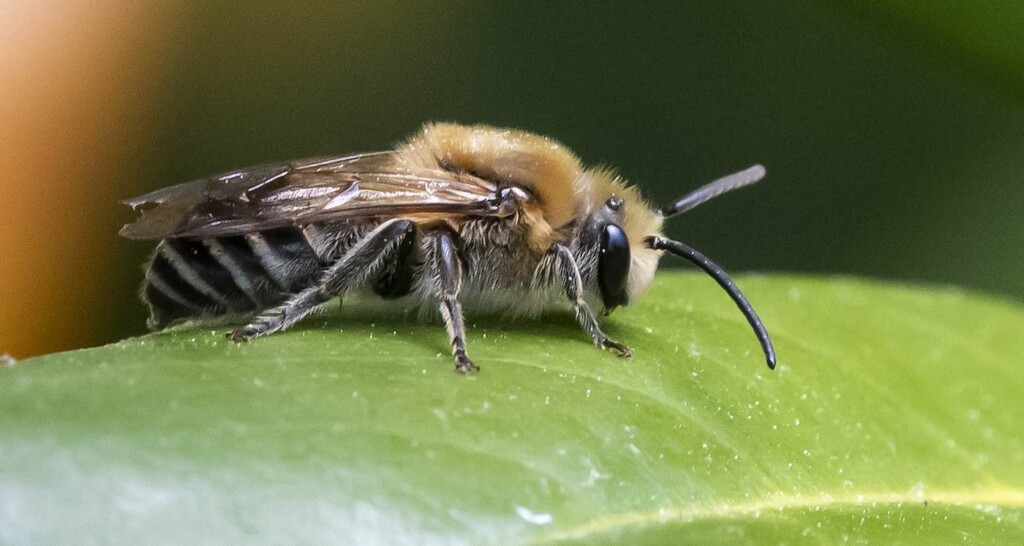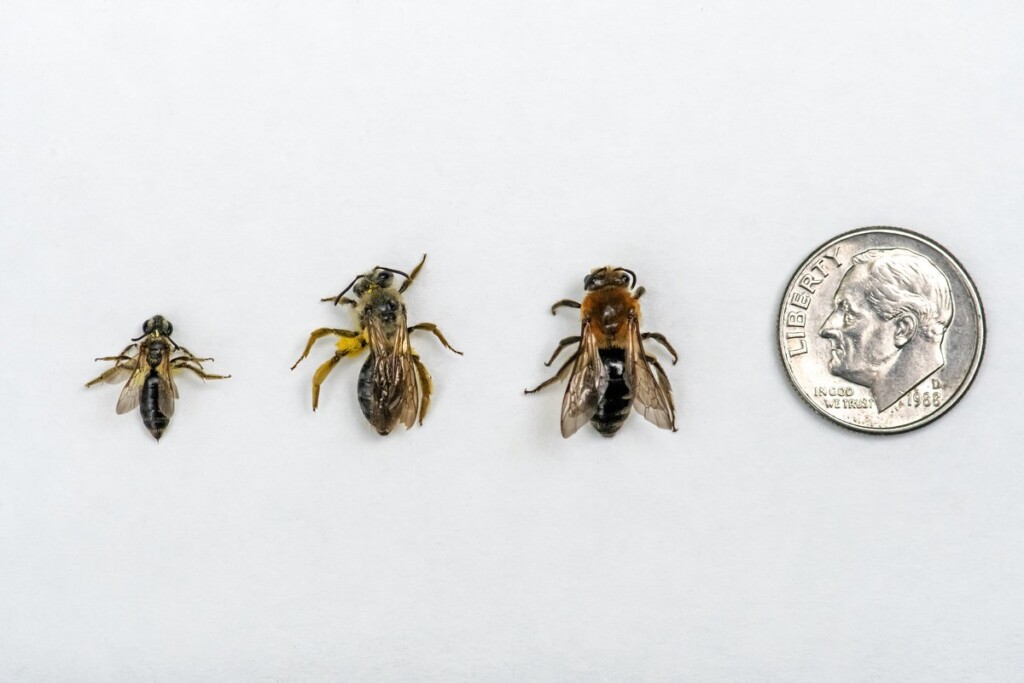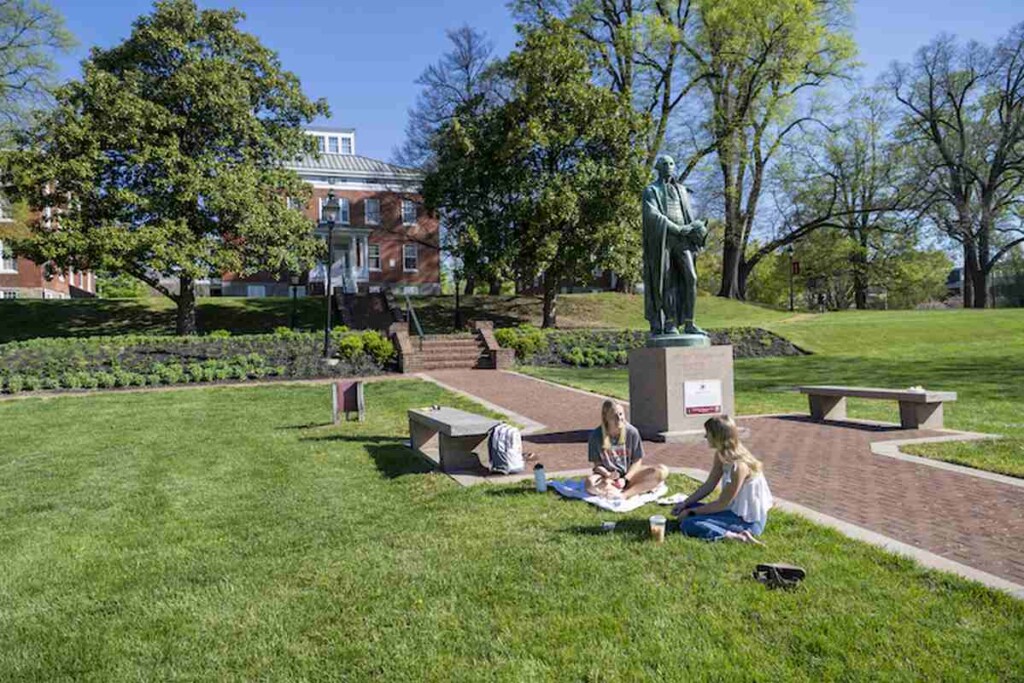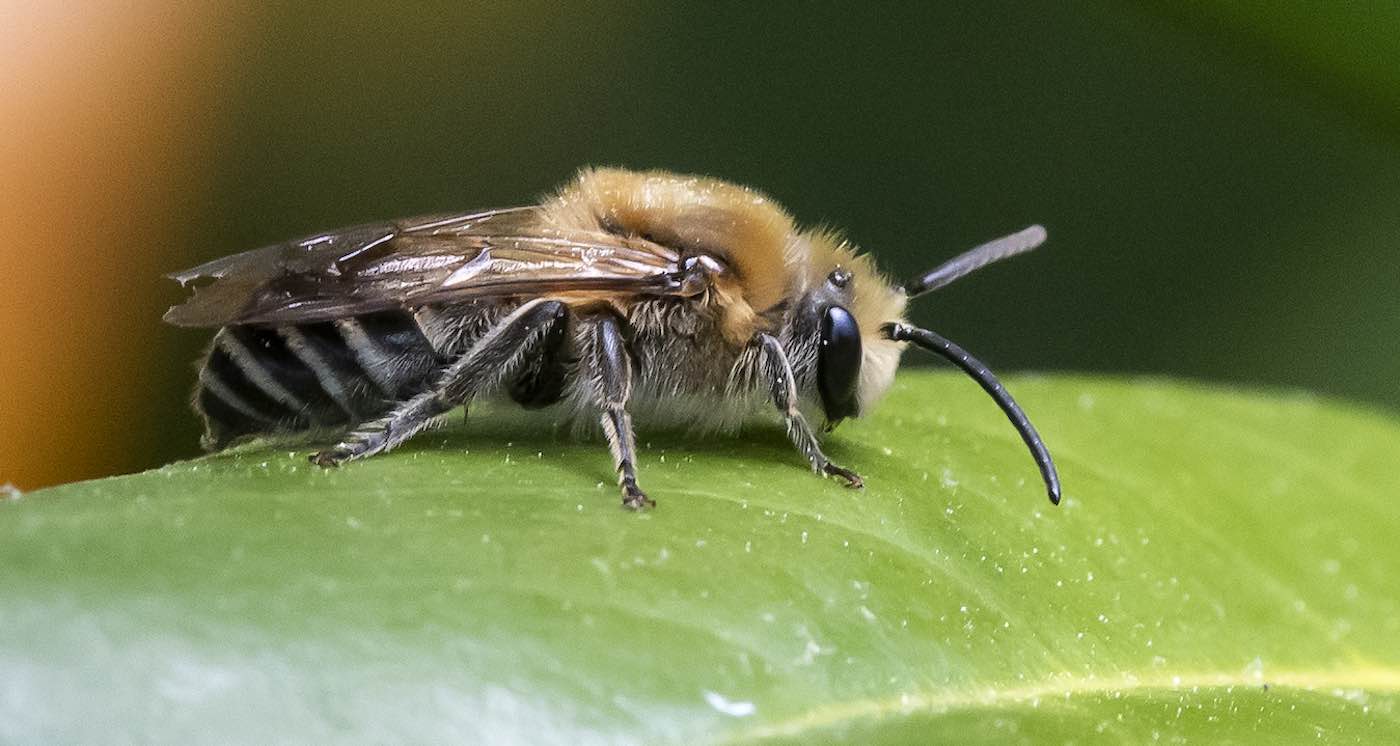
In a charming coincidence, a pair of bee and insect specialists from Washington College are buzzing with excitement about a unique and newly documented population of native bees right on their very own campus.
Although the large group of ground-nesting bees has been noticeable on one corner of the campus for years, recent identification of at least five different species all using the same area has sparked interest from researchers.
The section of the college green located in front of East and Middle Halls is a hotspot for these vital pollinators, with ground-nesting ‘mining’ bees from the Andrena and Colletes genera thriving on the hill at the base of the halls.
Recently, thanks to her keen eye and love of insects, photographer Pamela Cowart-Rickman realized that the area has multiple species of native mining bees all nesting together, something that has not been well documented.
Cowart-Rickman, who studied biology at WC as an undergrad and developed a love of insects has tentatively identified five different species that are all sharing the same nesting grounds. They include four different Andrena (mining bees), one Colletes (cellophane bees), and likely three cuckoo bees in the genus Nomada.
“The Washington College site provides rare nesting habitat for multiple native bee species, several of which are uncommon and unidentified,” said Sam Droege from the US Geological Survey’s Bee Lab.
“We always talk about providing plants to support native bees and other pollinators, but we rarely think about providing adequate nesting habitat for their survival. These native bees provide beneficial pollination to fruiting trees and plants, not only on the College campus, but also the Chestertown community.”
“They have been nesting amongst and on top of each other for several years in this same location,” said Cowart-Rickman of the bees she has spotted. “The various Andrena have the largest nesting area and emerge first in late February. The Colletes have a smaller area and emerge later in late April.”

Cowart-Rickman devotes her free time to photographing insects and has been helping researchers identify and track populations. She has found and documented several species for MD Biodiversity, BugGuide, iNat, and researchers at the Canadian National Collection of Insects.
When she realized what she had stumbled upon right outside her own office building on campus, she reached out to Dr. Beth Choate, deputy director of the Washington College Center for Environment and Society. Choate, who has published research on the abundance of wild bee populations in urban and rural gradients, was also intrigued by the nesting sites Cowart-Rickman had found. The two decided to investigate further.
“On a nice day in the spring, you can see the male bees hovering right at grass level. There were hundreds of these males searching for a female to mate when we were out there,” said Choate.
MORE INSECT INSPIRATION: Spiders Use Their Webs as Giant Microphones to Hear What’s Going on Around Them, Says New Research
Females create a small burrow in the ground for rearing young and a ball of pollen and nectar is placed in each to feed the larval bee when it emerges from the egg, Choate explained. Once the males and females mate, the female returns to her nest and lays the egg in the carefully constructed burrow to develop.

“Ground-nesting bees need bare, minimally covered ground in order to dig into the soil. They also prefer sunny and well-drained soil, but it will be interesting to learn what is unique about the soil in this space and why the aggregation has become so large,” said Choate.
“Since ground-nesting bees are solitary and do not form colonies, they generally aren’t as noticeable as this aggregation. Females often create nests near one another; however, an aggregation this large is unique.”
YOU MIGHT ALSO LIKE: Australian Scientists Manage to Identify 1,100 Species in their Backyards, Highlighting Value of Urban Biodiversity.
After seeing one of Cowart-Rickman’s nesting bee photos on iNat, and realizing the rarity of the site, Dr. Jordan Kueneman, a researcher with Project GNBee who is working on tracking ground-nesting bees at the Danforth Lab at Cornell University, reached out to Cowart-Rickman about possibly providing further research samples and information.
“We were very excited to learn about the ground-nesting bee aggregations at Washington College, for a myriad of reasons,” said Kueneman. “First, the size of the aggregation is substantial, and multiple species are utilizing areas of the overall site to nest. This scenario is ideal for understanding nesting requirements for bees and how those vary by species.
“Second,” Kueneman continued, “intermixed aggregations of nesting bees are particularly interesting to study from an ecological perspective, as the cost/benefits of varying nesting strategies and behavior can be more easily studied, particularly in the context of phenology, nest architecture, and risk of parasitism.”
BEE STORIES: Bumblebees Share Knowledge Like Humans and Chimpanzees, Suggesting the Hive Mind Is More Personal
He noted that due to its location, the Washington College aggregation can easily provide the opportunity for students and the public to learn about the biology of ground-nesting bees and the value they provide to the environment. He is also hopeful that knowledge of the history of the area and the site’s management can help inform how ground management practices on campus have impacted the population in the past and provide opportunities to explore how current management will impact this population in the future.
Research and monitoring of the aggregation will continue as teams from both schools work together to study what makes this site so appealing to multiple species of bees.
SHARE This Fascinating Bee Behavior With Your Friends On Social Media…




















